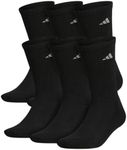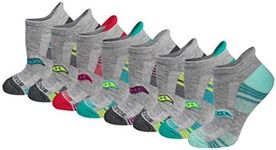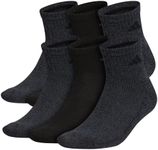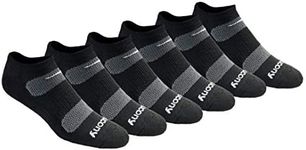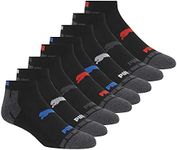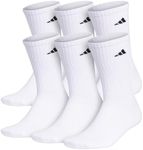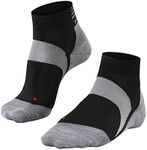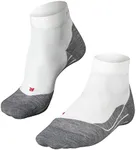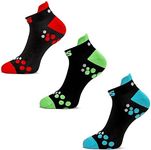Buying Guide for the Best Running Socks
Choosing the right running socks is crucial for comfort, performance, and preventing injuries. The right pair of socks can make a significant difference in your running experience by providing the necessary support, cushioning, and moisture management. When selecting running socks, consider the material, cushioning, fit, and additional features that cater to your specific needs and running conditions.MaterialThe material of running socks is important because it affects breathability, moisture-wicking, and comfort. Common materials include synthetic fibers like polyester, nylon, and spandex, which are known for their moisture-wicking properties and durability. Natural fibers like merino wool are also popular for their softness, breathability, and ability to regulate temperature. If you tend to sweat a lot, look for socks with high moisture-wicking capabilities. For colder climates, merino wool can provide warmth while still managing moisture.
CushioningCushioning in running socks provides impact protection and comfort. Socks can range from ultra-light with minimal cushioning to thick with maximum cushioning. Lightly cushioned socks are ideal for runners who prefer a more natural feel and have well-cushioned shoes. Medium cushioning offers a balance of comfort and protection, suitable for most runners. Heavily cushioned socks are best for long-distance runners or those who need extra padding due to joint issues or running on hard surfaces. Choose the level of cushioning based on your comfort preference and the type of running you do.
FitThe fit of running socks is crucial for preventing blisters and ensuring comfort. A good fit means the socks should be snug but not too tight, with no excess fabric that can cause friction. Look for socks with arch support and a secure heel fit to keep them in place during your run. Compression socks can also provide additional support and improve blood circulation. If you have specific foot issues like high arches or flat feet, consider socks designed to address these needs. Always try on socks with your running shoes to ensure a proper fit.
HeightThe height of running socks can affect comfort and protection. No-show socks are low-cut and ideal for a minimalist feel, but they may not provide enough protection against debris or chafing from the shoe collar. Ankle socks offer a bit more coverage and are a popular choice for most runners. Crew socks extend up to the mid-calf and provide additional protection against dirt and scratches, making them suitable for trail running. Knee-high socks, often compression socks, offer full lower leg support and are beneficial for recovery and long-distance running. Choose the height based on your running environment and personal preference.
Seam ConstructionSeam construction in running socks can impact comfort and the likelihood of blisters. Seamless or flat-seam socks reduce friction and irritation, making them ideal for long runs or sensitive skin. Traditional seams can cause pressure points and blisters, especially during extended runs. If you are prone to blisters or have sensitive feet, opt for seamless or flat-seam socks. Always check the inside of the socks for any rough or raised seams that could cause discomfort.
Moisture ManagementMoisture management is essential in running socks to keep your feet dry and prevent blisters. Socks with good moisture-wicking properties draw sweat away from your skin and allow it to evaporate quickly. Synthetic materials like polyester and nylon are excellent at moisture management, while merino wool also performs well in this regard. If you run in hot and humid conditions, prioritize socks with superior moisture-wicking capabilities. For cold weather running, moisture management is still important to keep your feet dry and warm.
